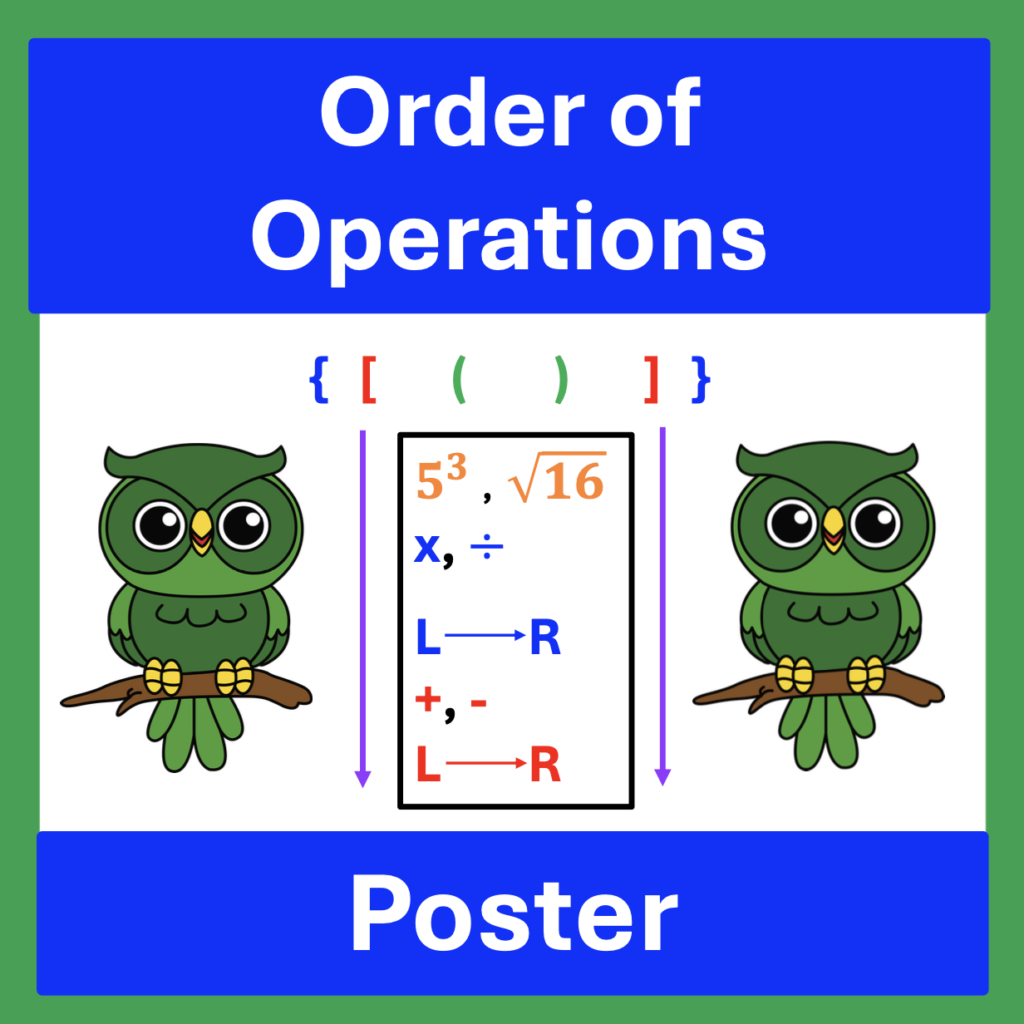Are you looking for tips to help you prepare to teach order of operations? Are you looking for ways to ensure student readiness? Keep reading.
#1 – Review Previous Skills
Are you wondering how to prepare for the order of operations? Start with a math review that includes operations with integers and simplifying numbers with exponents and roots. If some of your students continue to experience challenges with these concepts after reviewing, provide posters, study guides, or other reference tools for student reference.
Next, review basic operations with fractions and decimals. Students often panic with these concepts. On the other hand, if they receive a review of concepts and are provided posters, study guides, or other reference tools.
#2 – Trends
In addition, it is important to consider common trends as students begin tackling order of operation problems.
A. Different Terminology Used with Order of Operations
For example, you have likely discovered more than one set of terminology used with order of operations.
- 1. PEMDAS: Parentheses, Exponents, Division, Addition, Subtraction (Please Excuse My Dear Aunt Sally)
2. BEDMAS: Brackets, Exponents, Division, Multiplication, Addition, Subtraction
3. GEMDAS: Grouping, Exponents, Multiplication, Division, Addition, and Subtraction
Furthermore, which one do you use? All of them. Notice that the last four are the same. Now we must consider “parentheses,” “brackets,” and “grouping” symbols. The best way to clear up this confusion is with a visual for these three descriptions like this: { [ ( ) } } and including the statement, “Work from the inside-out.”
B. Common Mistakes with Order of Operations
Next, let’s consider common mistakes.
- 1. Students rush through an assignment, completing all operations without writing each step, resulting in an incorrect answer.
2. Inaccurate copying from one line to the next.
3. Students choose a preferred operation over the order for adding and multiplying. Example: 6 + 3 x 5, resulting in an inaccurate answer of 45.
Number 3 is likely the most challenging as students are used to calculating numbers from left to right.
Solutions:
If possible, provide a non-distracting environment for the student to work. Ask the student to re-do the problem at a slower pace.
#3 – Organizational Challenges
Furthermore, though students may be able to complete operations with two to three numbers, they may begin to become overwhelmed with larger problems. These students may benefit from an order of operations color-coded visual to use as a checklist. Such an arrangement is also ideal for students who struggle with auditory or reading comprehension. If they can see it, they can do it.
Are you looking for a poster with such a design? I’ve got you covered. Click on the link below the image to learn more.

https://www.teacherspayteachers.com/Product/Order-of-Operations-Poster-12983119
#4 – Strategies
Furthermore, the following are additional strategies that may also be helpful.
- 1. Illustrate examples using color for various operations to help students recognize where the changes occur or where the next step can be made. To save time switching between marker colors, write each line in black and then go back and underline or circle the operation for that step in the problem.
2. Insist that students illustrate each step on separate lines. Emphasize: “It is about the process.”
Differentiate assignments by the number of steps required for each problem.
3. Require students to skip a space between each illustrated step.
I frequently hand back assignments if the student has not written out steps as directed. My students must show all the steps before I count the assignment as credit before turning it in next time.
4. Allow students to work in pairs. First, encourage students to discuss steps as they solve the problem. Second, the pair work problems separately. Third, they compare steps and answers, making corrections as needed. To keep the paired students on task, provide a time frame.

Conclusion
In conclusion, preparation to teach order of operation concepts includes opportunities to review previous skills that will be applied, considering trends, common mistakes, organizational challenges, and effective strategies.
Other Related Posts

Looking for More Materials?
Click the button below to view more of my educational resources!
